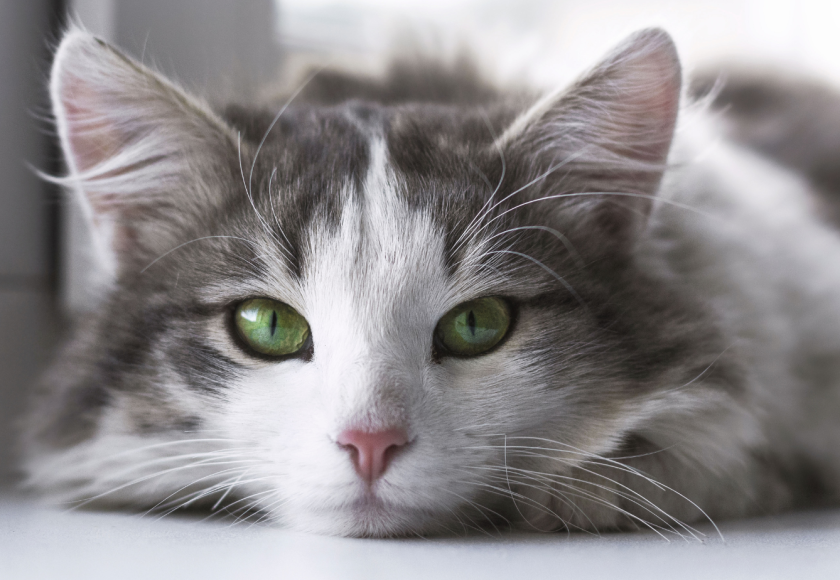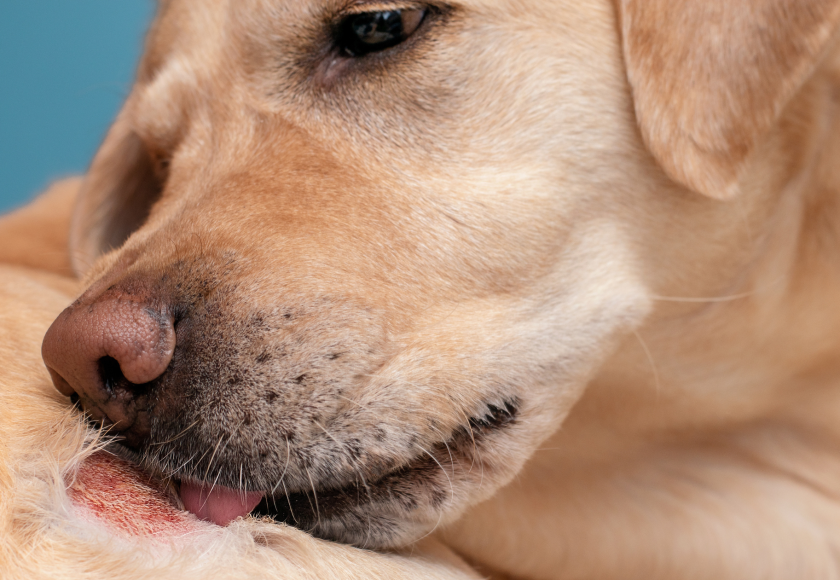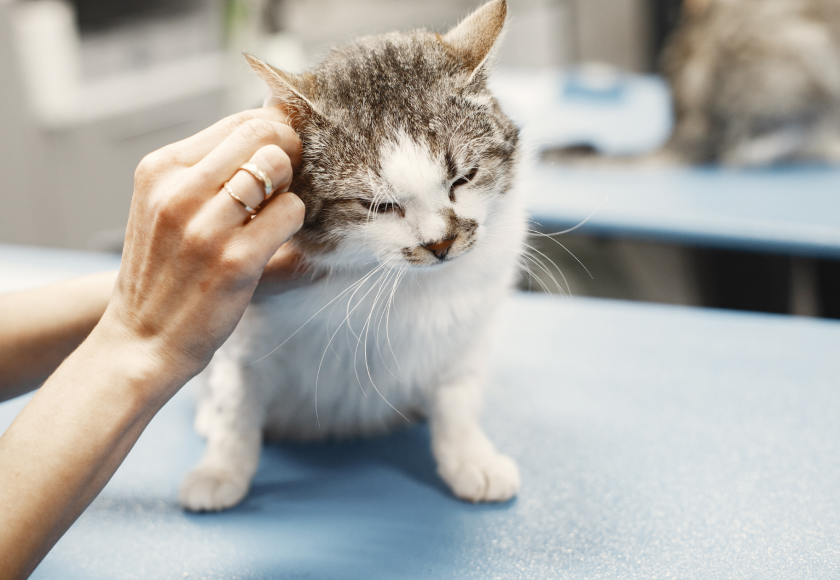Like all living organisms, cats can be allergic to both food and their environment. Cat allergies are an increasingly common diagnosis in veterinary medicine. Cat allergies are incurable but manageable, so it is very important to understand what causes your cat’s allergies and how to care for him or her.
Table of contents
What exactly is cat allergy?
Cat allergies occur when a cat’s immune system reacts too strongly or is overly sensitive to foreign substances called allergens. Allergens are foreign proteins that the body’s immune system tries to eliminate.
Examples of common allergens include pollen, dust, mold, and pet hair. Increased sensitivity, or cat allergies, can manifest in one of three ways:
- The most common symptom in cats is itchy skin, either localized in one area or affecting the entire body. The cat begins to scratch intensely at its ears, armpits, between its toes, ears, eyes, or other areas of its muzzle.
- The second and also common symptom of cat allergies is coughing, sneezing, and wheezing. Sometimes there may be discharge from the nose or eyes.
- The third manifestation of cat allergy involves the digestive system and can cause cat vomiting, bloating, and/or diarrhea in cats. This is the most common manifestation of cat food allergies. The most common allergens in cat food are meat and/or fish proteins.
Types of cat allergies
There are four common types of cat allergies:
- Fur and skin parasites – most commonly fleas;
- Food allergies;
- Atopic dermatitis (house dust and dust mites, pollen, and mold);
- Contact allergies.
Each type of cat allergy has both common symptoms and unique clinical manifestations, most often observed by veterinary allergists.
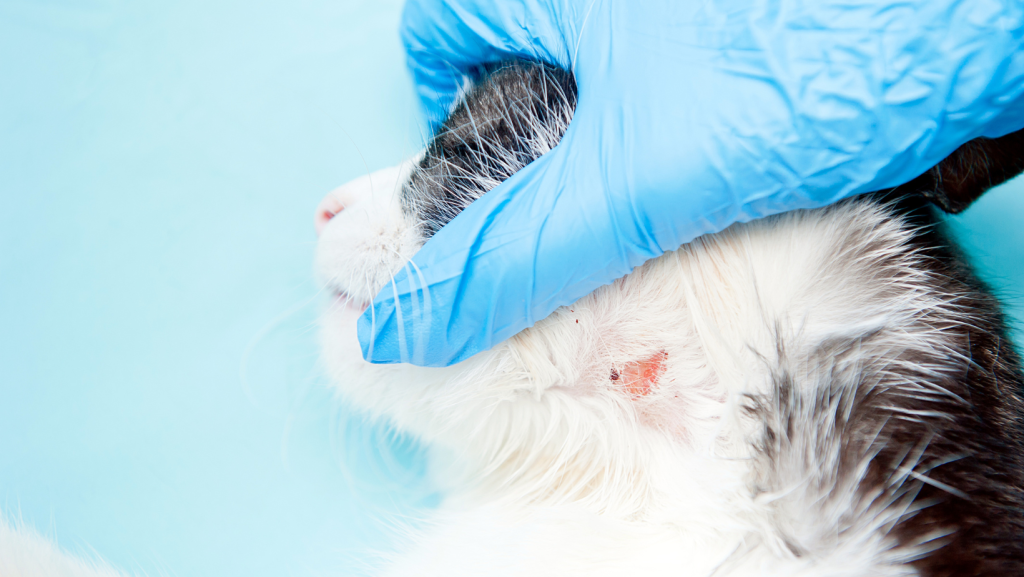
Cat allergy to fleas and other skin and coat parasites
Flea allergy is the most common form of cat allergy. A cat with flea allergy reacts strongly to even a single flea. This reaction is an allergic reaction to proteins or antigens in flea saliva.
When a flea bites a cat to feed on its blood, it injects saliva into the skin. Just one flea can cause such severe itching in an allergic cat that it may scratch or bite itself severely, resulting in hair loss, wounds, and, if not treated in time, secondary skin inflammation in the affected areas.
Often, wounds or scabs appear on the skin, leading to a secondary bacterial skin infection (pyoderma). The most commonly affected areas are above the occiput or at the base of the tail. In addition, the cat may have many small scabs around the head and neck. These scabs are often referred to as miliary dermatitis, a term that comes from the fact that the scabs look like millet seeds.
Treatment methods for cat flea allergies
Any treatment for cat allergies must be prescribed by a veterinary allergist. Since flea saliva causes the allergic reaction in cats, the most important part of flea allergy treatment is preventing fleas from getting there in the first place. Strict flea control all year round is the foundation of successful cat allergy treatment.
There are many highly effective flea control products available to treat cats and control fleas in the environment. Modern flea prevention measures make it easier than ever to protect your allergic cat from the effects of fleas.
If your cat becomes infested with fleas and has a severe allergic reaction, veterinarians may also use other medications. Properly selected corticosteroids can block the allergic reaction and immediately relieve your cat’s allergic reaction (severe itching).
This is often a necessary part of treatment, especially in the early stages. If a secondary bacterial skin infection develops due to allergic flea dermatitis, it is important to use antibiotics prescribed by a veterinary allergist for two to four weeks.
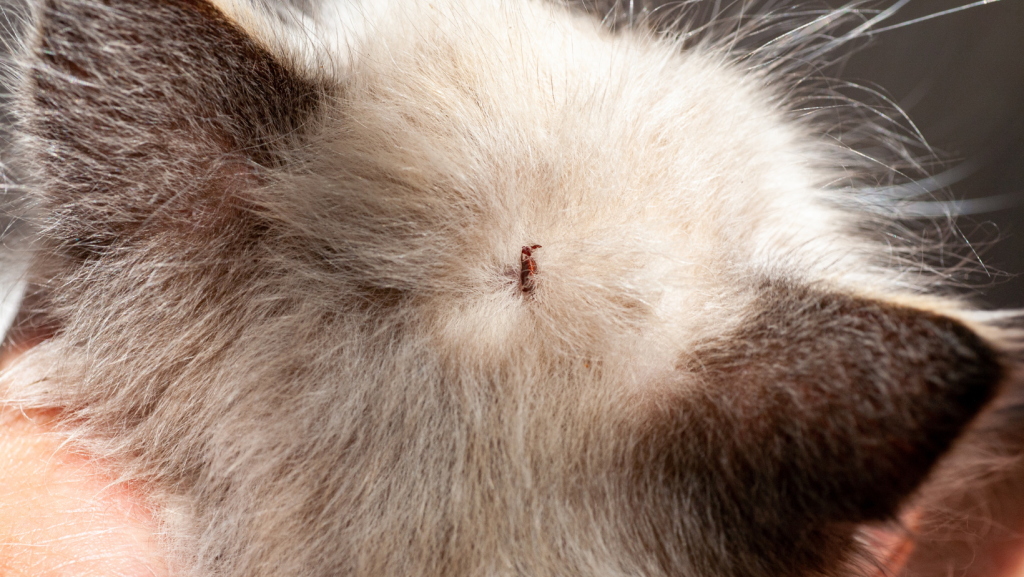
Cat food allergies
Food allergies in cats are caused by an immune reaction to a protein or food additive in their food. Allergies most commonly develop in response to a food protein component (e.g., beef, pork, chicken, or turkey).
Plant proteins, such as those found in corn and wheat, and food additives and preservatives can also cause food allergies in cats in some cases. Food allergies can cause any of the clinical signs mentioned above, including itching, digestive problems, and breathing difficulties.
Diagnostic tests for cat allergies are performed initially using an elimination or hypoallergenic diet. This means that an allergic cat must be fed a special veterinary diet selected by a veterinary allergist for 8-12 weeks, containing ingredients that the cat has not been fed before or proteins that have been hydrolyzed and processed so that they do not cause an immune response. Since it takes at least eight weeks for all other foods to be eliminated from the body, the cat must eat only the special diet for at least eight to twelve weeks.
What is atopic dermatitis or atopy caused by cat allergies?
Atopic dermatitis in cats, also known as atopy, usually refers to allergic reactions to environmental allergens such as pollen, grass, mold, mildew, and dust mites. Many of these allergies are seasonal, such as when certain plants start to bloom indoors or outdoors in the spring.
However, other allergens are always present in our homes and around our pets, such as mold, mildew, and dust mites. When a cat with allergies inhales these allergens, it experiences an initial reaction to atopy – severe generalized itching.
It is important to remember that atopic dermatitis is a lifelong disease with frequent relapses. There is no “cure” for allergic skin diseases, only treatment that reduces clinical signs and improves quality of life. Although cats are less likely than dogs or humans to experience side effects associated with chronic steroid use, long-term use should be monitored closely. It is very important to work closely with your veterinarian to ensure the best care for your cat’s allergic condition and to fully understand the risks and benefits of each treatment.
Atopic dermatitis caused by allergies in cats must be treated as prescribed by a veterinarian who has diagnosed the allergy. Each treatment method is selected based on an accurate diagnosis and individually according to the cat’s weight, breed, and lifestyle.
Sometimes systemic medications alone are not enough, so several treatment methods must be used at the same time, both externally and internally (by injection or oral medication). Only an experienced veterinary dermatologist-allergist can select the most appropriate and effective treatment.
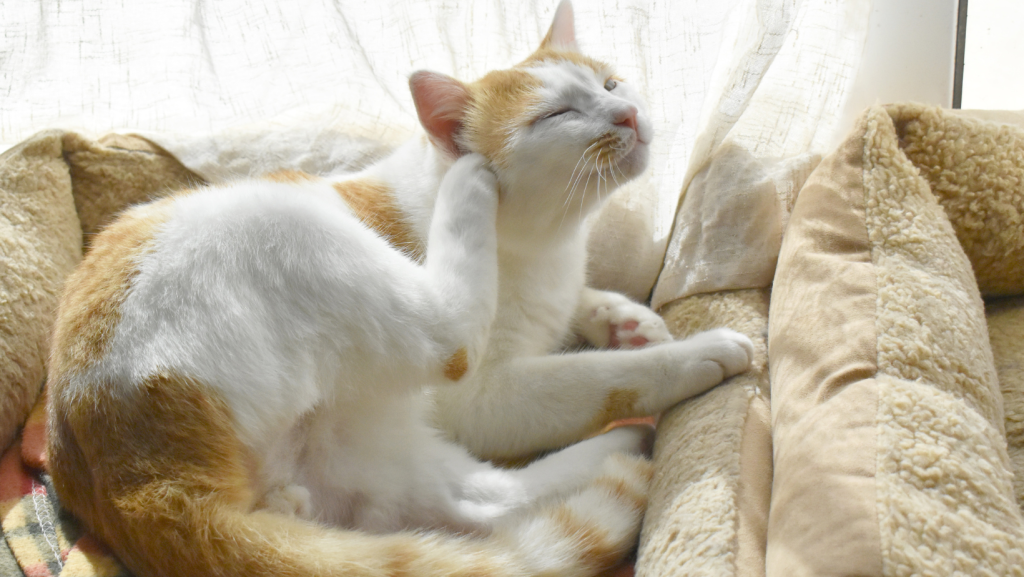
Cat contact allergy and how it is treated
Contact allergies are the rarest type of cat allergy. They cause a local skin reaction due to contact with an allergenic substance. Examples of contact allergies include reactions to shampoos, flea collars, or certain types of bedding, such as wool.
If a cat is allergic to such substances, skin irritation and itching occur at the contact sites. Removing the contact irritant solves the problem. However, in many cases, identifying the allergen can be difficult.
If the allergen is not removed from the cat’s environment in time, secondary skin inflammation may occur due to intense scratching, biting, or rubbing against objects in the environment. Therefore, it is important to always consult a veterinarian, who will not only help identify the type of allergy your cat has, but also prevent secondary diseases.
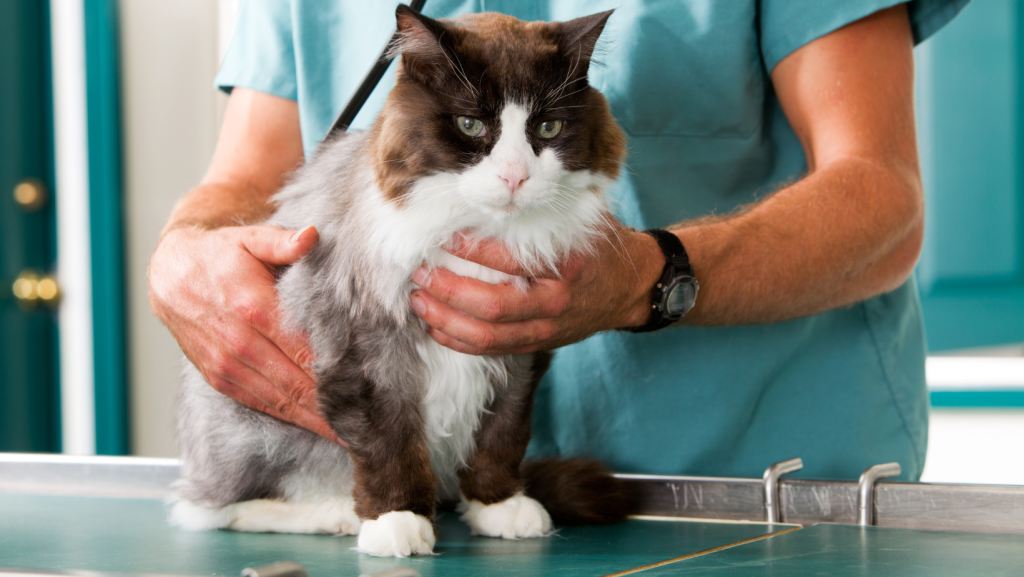
What should I do if my cat has one of the above allergies?
The answer is quite simple – contact a competent veterinary clinic and get all the necessary information. Only experienced veterinarians work at the Begemotas veterinary clinic in Vilnius. Milda Vasaitytė, a veterinarian working at Begemotas, has been deepening her knowledge of allergies, skin, and the digestive tract for many years.
Dr. Milda’s accumulated and constantly expanding knowledge ensures the selection of the most appropriate treatment and the most innovative and best diagnostic methods. At the Begemotas veterinary clinic, your pet will receive the best care and examination, and you will receive a detailed and sincere consultation.



